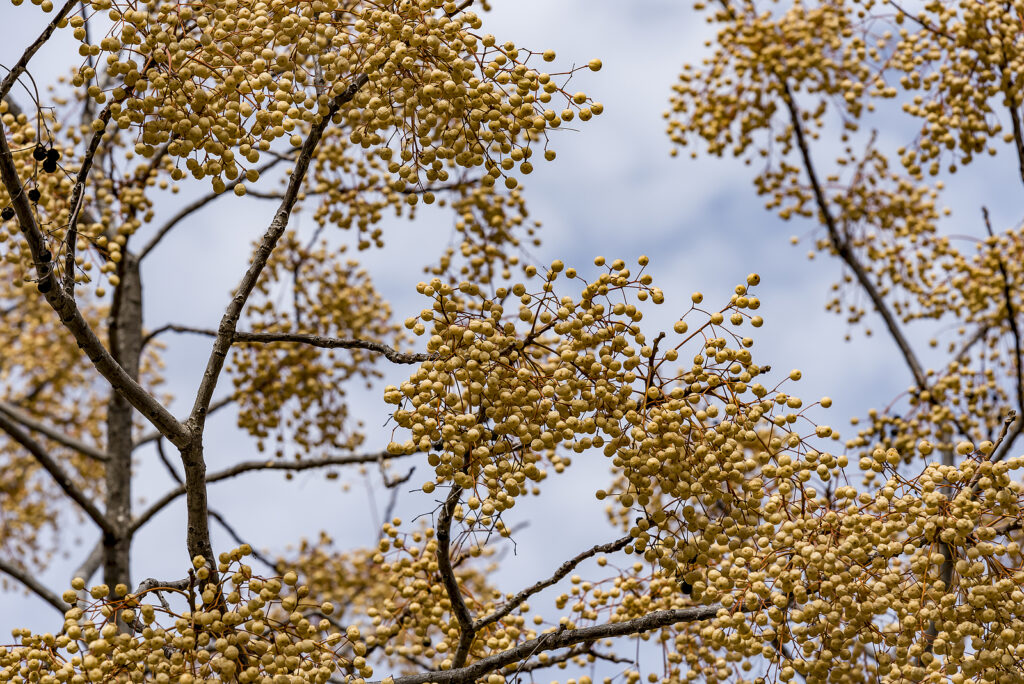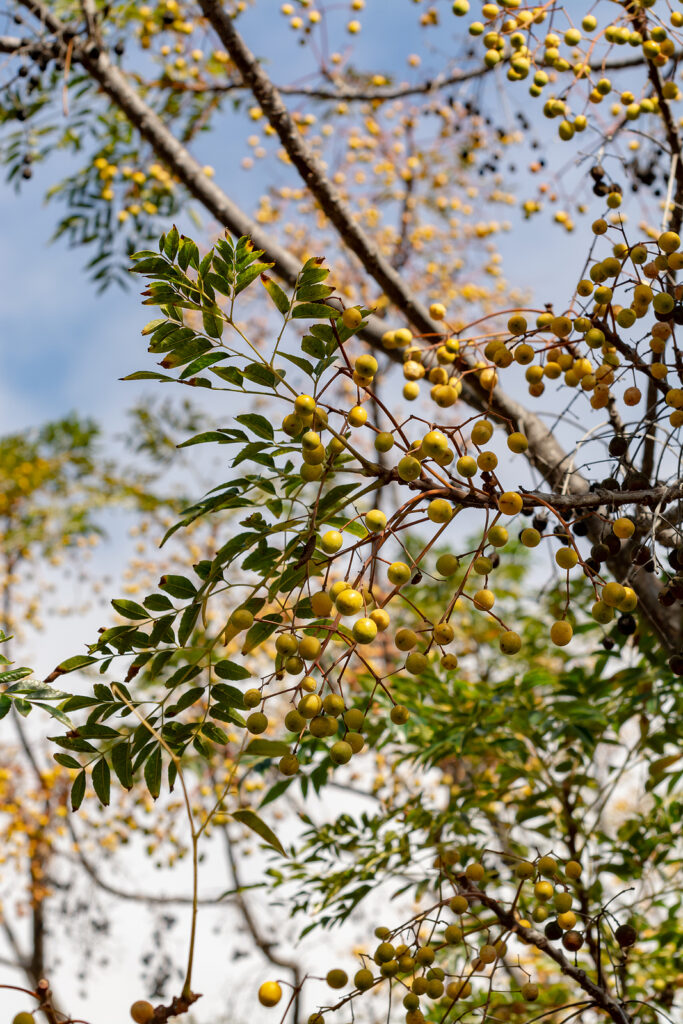Melia—commonly called Chinaberry—is a medium-sized deciduous tree that grows best in warm-winter regions. It is often grown as a shade tree in poor conditions; Melia is a tough tree that tolerates heat, wind, poor alkaline soil, and drought.
Melia bears interesting star-shaped flowers in spring. Each flower has 5 or 6 spreading petals and 10 to 12 stamens. The flowers are followed by bead-like spherical berries—that are poisonous.
Melia is not hardy. In cold-winter regions, it can be grown as a greenhouse plant. In a large container, it will grow 6 to 10 feet (2-3m) tall.
Melia wood is brittle and outdoors the plant can suffer damage in a big wind or storm.

Get to know Melia – Chinaberry
- Plant type: Deciduous tree
- Growing zones and range: Zones 10 to 12
- Hardiness: Does not tolerate cold
- Height and width: 30 to 50 feet (9-15m) tall, spreading irregular habit
- Foliage: Leaves 1 to 3 feet long divided into many toothed, narrow, or oval leaves 1 to 2 inches (2.5-5cm) long
- Flowers: Loose clusters of lilac flowers, fragrant in the evening
- Bloom time: Spring or early summer
- Uses: Specimen, lawn tree, shade tree; in cold winter regions greenhouse plant
- Common name: Chinaberry
- Botanical name: Melia azedarach
- Family name: Meliaceae
- Origin: From India to China
Where to plant Melia – Chinaberry
- Plant Melia in full sun.
- Grow Chinaberry in humus-rich, well-drained soil. Chinaberry will grow in average soil and can tolerate alkaline soil.
- Do not plant Chinaberry where there is a prevailing wind; the wood is brittle and branches can suffer storm damage.

When to plant Melia – Chinaberry
- Set container-grown Chinaberry in the garden in spring or autumn.
Planting and spacing Melia – Chinaberry
- Space Chinaberry 15 to 25 feet (5-8m).
How to water and feed Melia – Chinaberry
- Keep the soil evenly moist.
- Fertilize Chinaberry in spring with an all-purpose, organic fertilizer.
Melia – Chinaberry care
- Where Chinaberry is not hardy grow it in a greenhouse in full light.
Melia – Chinaberry pests and diseases
- Canker, dieback, anthracnose, powdery mildew, mushroom root rot, spider mites, and scale insects can attack Melia,

Melia – Chinaberry propagation
- Sow seed at 55° to 64°F (13-18°C) in spring.
- Root softwood cutting with bottom heat in summer.
Melia – Chinaberry varieties to grow
- Melia azedarach, Chinaberry: Deciduous tree grows 30 to 50 feet (9-15m) tall with an irregular spreading habit; leaves 1 to 3 feet long cut into narrow or oval leaflets 1-2 inches long; bears loose clusters of night fragrant lilac flowers in spring and early summer; berry-like yellow fruits follow flowers—fruits are poisonous.
- M.a. umbraculiformis, Texas umbrella tree: Grows to 30 feet tall with dense spreading dome-shaped crown and drooping leaves.



